Understanding Comics Chapter Three “Blood in the Gutter”
Chapter Three of Scott McCloud’s Understanding Comics, titled “Blood in the Gutter,” would be taught in the early stages of the graphic novel unit, where many of the possible texts, such as Watchmen, use concepts described in McCloud’s book. This reading would follow the preceding two chapters of McCloud’s book, which give a brief history of comics and the most basic vocabulary of comics respectively, and in this class are mean to precede reading Alan Moore’s Watchmen, particularly for its complex story elements and usage of the elements of comic structure. This reading could be matched with any high school level classroom, though I am considering it here for a junior or senior class.
McCloud uses a combination of text and images to describe the way comic writers use panels and the space between panels to manipulate the reader’s perception of time and increase involvement in the comic. He describes six forms of transitions: moment-to-moment, action-to-action, subject-to-subject, scene-to-scene, aspect-to-aspect, and non-sequitur, enhancing each with multiple examples. McCloud describes breakdown in usage by different writers and countries, and the strengths of each transition. McCloud briefly touches on how comic writers invoke the senses since reader perception and interpretation of visual cues, and sometimes invisible assumptions, of representation and images that are enhanced by reader background.
This reading is suitable for all high school classes. It is useful to be taught any time students are introduced to comics in academia, but also for a quick review of comics if re-introduced to them. The text is meant as an introductory text to the material of comics, but is geared towards students and adults, so the language is approachable. McCloud makes an explanation and in a defined area near his words uses images to enhance and demonstrate what he is explaining, in many cases demonstrating the concept multiple times. Any references to comic writers are immediately reinforced with an example, removing the need for background knowledge. The text contains a few ELA concept or topic vocabulary, like genre, and many graphic novel topic vocabulary, but that is explained either in this chapter or preceding ones. Because of this, this text can be read with this chapter by itself, but it strongly benefits from reading the entire text of Understanding Comics sequentially.
Guiding Question: What is it about the structure of comics that creates a more meaningful or different experience than a traditional text?
Lesson
Day 1
Activity: Panel Guiding Questions for Reading Focus (see Lattimer 22, 31) 20-30 min
A students enter the classroom I will have a set of numbered pictures taped to the chalkboard and ask students to take a look at them as they enter. Once class begins I will ask students to look at the pictures first alone and write down thoughts on at least two sets of panels, but not limited to two, pertaining to the following questions: “What do you see in the panel set? What is happening? What does the layout of the panels tell you, and how does it affect presentation of what is happening? What do you see about the subject, mood, and tone of the image? Write any questions you have as well.”
After writing alone for a few minutes (10min), students will group up in groups of 5-6, preferably by comic choice, to discuss their observations (5-10min). Then the whole class will discuss their observations of and reactions to the comic panels (10 min). The teacher should create a chart during discussion similar to a K-W-L chart (Lattimer 30) where the students observations and questions are displayed for future class reference.
After discussion begins to end, or when the idea comes up during discussion, I will explain that each set of panels illustrates a different kind of panel transition. I will then use each panel to explain the transition briefly. This is the main focus of the McCloud chapter we will be reading today.
Activity: Read Aloud (Lattimer 92) 20-30min
The class will begin to read “Blood in the Gutter” (Ch 3 Understanding Comics) starting on page 60. The predominant area of focus will be pages 66-78. I will start the read aloud and include inputs about what McCloud has written. I will also encourage students to make note of questions or important parts of the text they would want to reference later, and any words that look like important vocabulary words. Students do not have to read, but I will encourage participation in this. We will continue reading through class time, covering questions as they appear while reading.
Activity: Exit Slip (Daniels 35) (5 min)
Student will write to these prompts:
1) What might you use a panel transition to illustrate? (2 examples)
2) Are there any transitions that are confusing?
3) Questions?
Collect as students leave. Instruct to write the entire time.
Day 2
Activity: Panel-by-Panel Pass Around Visualization Activity (Daniels 48) (35-40 min)
I will first go over the six transitions, what they look like, and what they do, calling on students to name each. Use exit slips from the previous day to prompt discussion, bring up important ideas, or dispel confusion or misconceptions.
I will model this activity with two or three students first. For this activity, students need to divide a supplied piece of paper into six identical squares. Students then draw a simple picture of any sort that could begin a story and draw arrows to indicate which panel leads to the next one. Students will also make a title for their mini-comic. Then each student will pass their paper to another student. That student will draw the next part of the story, using information from previous images and the title, in the next square choosing an unused transition (action-to-action, non-sequitur, etc) and write their name. This will continue until the comic is complete and all transitions have been used. Students will recollect their papers and look over their comics. Students will share effective ones and ones with transitions that are confusing. Collect to assess vocabulary understanding of the transitions.
Activity: Complete K-W-L Chart (5-10 min)
I will draw attention back to the K-W-L chart to address what the class learned in a full class discussion and fill it out in the L-column, focusing on questions from the W-column.
Activity: Exit Slip (Daniels 35) (5 min)
Pose the following prompts to be filled out in the remaining time on a sheet of paper:
1) List two things you took away from the lesson on panel transitions. (One can be a drawing of two panels with a labeled transition if preferred)
2) Any other questions?
Instruct students to write the whole time and answer as many as possible. Collect as students leave.
Vocabulary
Panel: block encapsulating an event in a comic narrative
Gutter: the area between comic panels
Closure: observing the parts but perceiving the whole
Moment-to-Moment: transition with extremely small increment of subject movement requiring no closure
Action-to-Action: transition featuring a single subject in distinct progression
Subject-to-Subject: transition between subjects in a scene or idea
Scene-to-Scene: transition transporting reader across significant distances of time and space
Aspect-to-Aspect: transition bypassing time to display different aspects of a place, idea, or mood
Non-Sequitur: transition offering no logical relationships between panels whatsoever
Panel Set
#1 (Moment-to-Moment) Calvin and Hobbes
#2 (Action to Action) Bone
#3 (Subject-to-Subject) Understanding Comics
#4 (Scene-to-Scene) Watchmen
#5 (Aspect-to-Aspect) The Killing Joke
#6 (Non-sequitur) Understanding Comics

Works Cited
Brozo, William G., and Mayville Melissa. “Reinforcing Secondary Literacy Engagement with Graphic Novels.” The NERA Journal 48.1 (2012): 11-20. Print.
Daniels, Harvey, Steven Zemelman, and Nancy Steineke. “Content-area Writing: Every Teacher’s Guide.” Portsmouth, NH: Heinemann, 2007. Print.
Hassett, Dawnene D., and Melissa Schieble. “Finding Space and Time for the Visual in K- 12 Literacy Instruction.” The English Journal 97.1 (2007): 62-68. Print.
Hibbing, Anne Nielsen. “A Picture Is Worth a Thousand Words: Using Visual Images to Improve Comprehension for Middle School Struggling Readers.” The Reading Teacher 56.8 (2003): 758-70. Print.
Lattimer, Heather. “Reading for Learning: Using Discipline-based Texts to Build Content Knowledge.” Urbana, IL: National Council of Teachers of English, 2010. Print.
McCloud, Scott. “Chapter 3: Blood in the Gutter.” Understanding Comics:. New York: William Morrow, an Imprint of HarperCollins Publ., 2012. 60-93. Print.
Moje, Elizabeth Birr. “Foregrounding the Disciplines in Secondary Literacy Teaching and Learning: A Call for Change.” Journal of Adolescent & Adult Literacy 52.2 (2008): 96-107. Print.
Moore, Alan, and Brian Bolland. The Killing Joke. London: Titan, 2008. Print.
Moore, Alan, and Dave Gibbons. Watchmen. New York: DC Comics, 1987. Print.
Park, Jie Y. “All the ways of reading literature: Preservice teacher’s perspectives on disciplinary literacy.” English Education. July 2013: 361-384. Print.
Smith, Jeff. Bone: Volume 1: Out From Boneville. New York: GRAPHIX, 2005. Print.
Townsend, Dianna. “Building Academic Vocabulary in After-School Settings: Games for Growth With Middle School English-Language Learners.” Journal of Adolescent & Adult Literacy 53.3 (2009): 242-51. Print
Watterson, Bill. The Complete Calvin and Hobbes. Kansas City, MO: Andrews McMeel Pub., 2005. Print.
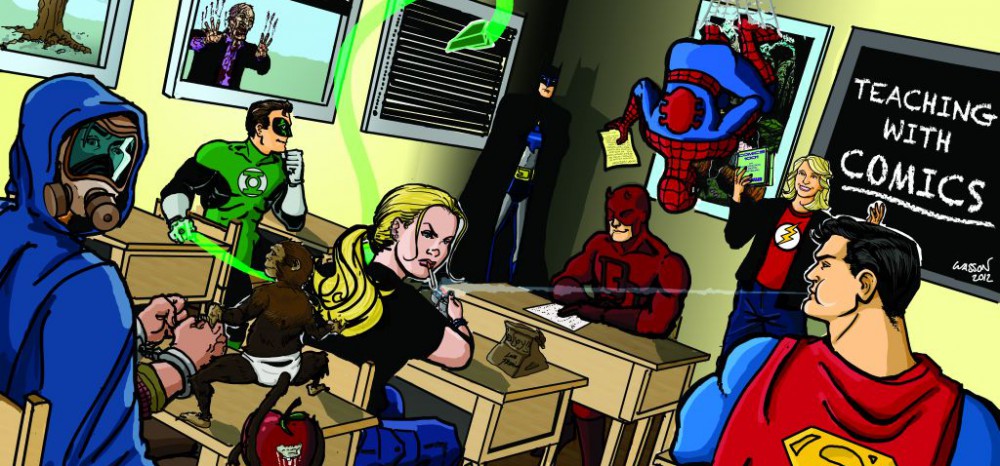

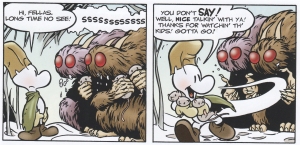

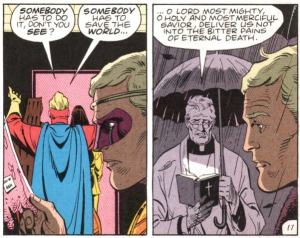

 English Language Arts setting, specifically looking for texts that would aid in teaching Watchmen and The Dark
English Language Arts setting, specifically looking for texts that would aid in teaching Watchmen and The Dark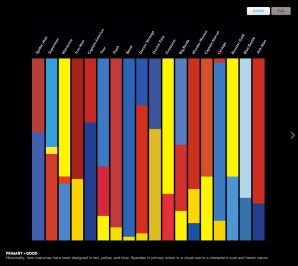

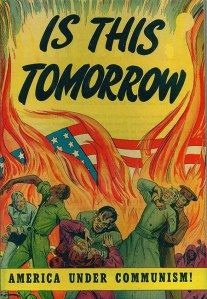



 d “messianic” are difficult words for a new reader.
d “messianic” are difficult words for a new reader. criminals, rehabilitation or arrest instead of killing, fits into the article’s argument that Batman is a reflection of the feudal lord, as well as discussing the similarities between Batman and his villains. The first part of the argument states that Batman’s need to not harm and even protect everyone, from civilians to those he must fight, puts him in the role of Bruce Wayne the prince and Batman the “dark” knight. The article then goes on to describe how Batman is given dark reflections of himself, another reason to spare criminals, in his major villains, such as more extreme vigilantes in Two-Face and Ra’s al Ghul, a counterpoint between chaos and order with The Joker, and the cultured Penguin who also desires lone feudal rule over Gotham.
criminals, rehabilitation or arrest instead of killing, fits into the article’s argument that Batman is a reflection of the feudal lord, as well as discussing the similarities between Batman and his villains. The first part of the argument states that Batman’s need to not harm and even protect everyone, from civilians to those he must fight, puts him in the role of Bruce Wayne the prince and Batman the “dark” knight. The article then goes on to describe how Batman is given dark reflections of himself, another reason to spare criminals, in his major villains, such as more extreme vigilantes in Two-Face and Ra’s al Ghul, a counterpoint between chaos and order with The Joker, and the cultured Penguin who also desires lone feudal rule over Gotham.

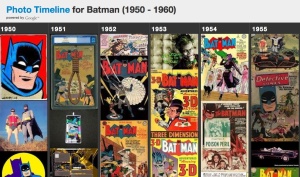
 are essentially the same thing, with graphic novel being basically a name given to comics to make them more respectable and marketable to a larger audience (the “novel” part does sometimes point to it being a contained story rather than a serial, but for the most part, they are the same thing). They are an old art form, and while comic books originate from collections of newspaper comic strips, there are older woodcuts, tapestries, and wall paintings that are essentially comics, sequential stories told with the aid of pictures. They are valuable, and undervalued, literary resources. Some comics have become widely regarded as literary pieces, such as
are essentially the same thing, with graphic novel being basically a name given to comics to make them more respectable and marketable to a larger audience (the “novel” part does sometimes point to it being a contained story rather than a serial, but for the most part, they are the same thing). They are an old art form, and while comic books originate from collections of newspaper comic strips, there are older woodcuts, tapestries, and wall paintings that are essentially comics, sequential stories told with the aid of pictures. They are valuable, and undervalued, literary resources. Some comics have become widely regarded as literary pieces, such as 

 r setting easily, and comics are a generally less intimidating text. It is also a great way for students to practice creative writing, with a major focus on dialogue and other story mechanics (
r setting easily, and comics are a generally less intimidating text. It is also a great way for students to practice creative writing, with a major focus on dialogue and other story mechanics (